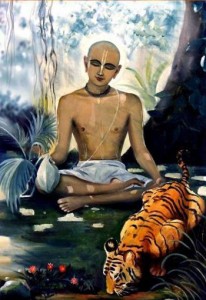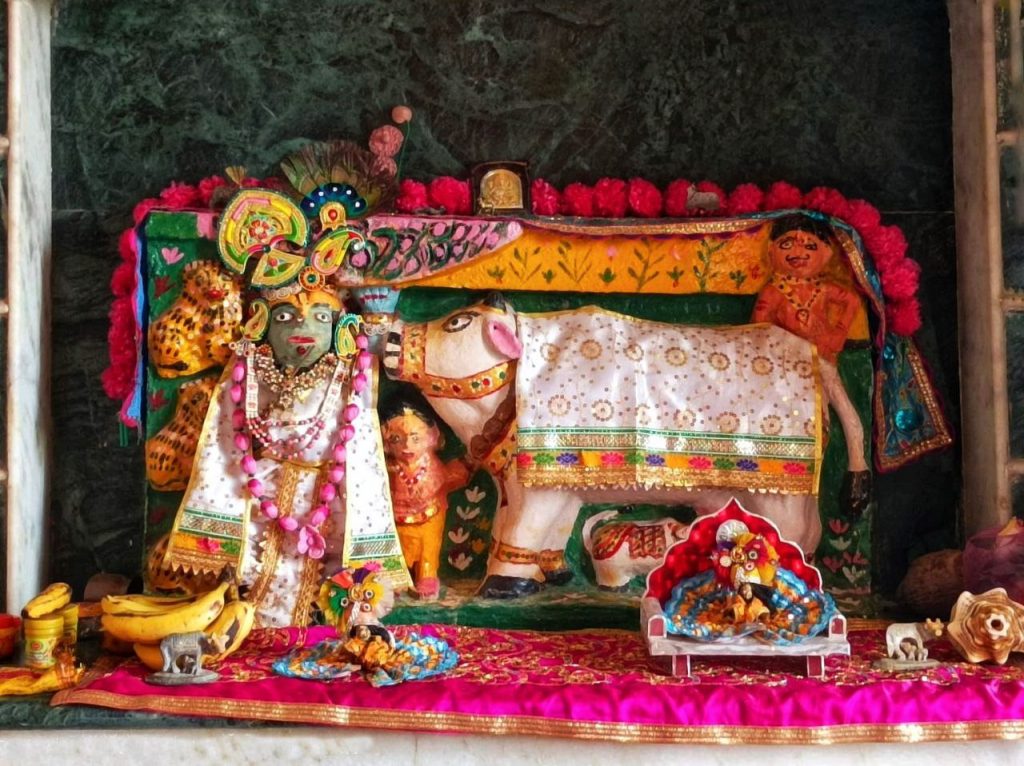
Courtesy -From Chaurasi-Kosa Vraja Mandal Parikrama Book By Sri Rajashekara Dasa

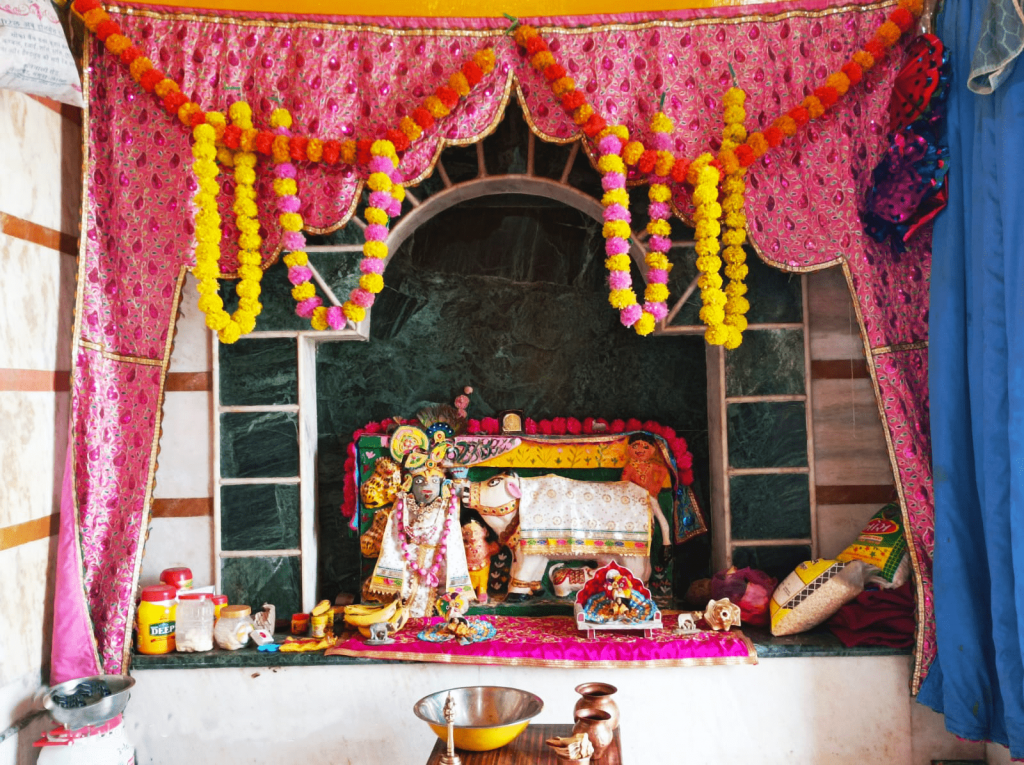
Therefore this night-time bath at Radha-kunda is called the adiratri-snana (mid-night bath) and it is the only snana or ritual bath in the Vedic calendar that is performed at midnight. However, Gaudiya scholars say that according to Shrila Jiva Goswami in his commentary on the tenth-canto of the Shrimad Bhagavatam (SB.10.45.3) Arishtasura was killed on the full-moon day in the month of Chaitra (March/April). “caitra-paurnamasyam arista-vadhah – Lord Sri Krishna killed Arishtasura on the full moon day of Chaitra.” Nevertheless, over the years Bahulashtami has become accepted as the actual appearance day of Radha-kunda and it has now become the most popular bathing day of the year. The midnight bath at Radha-kunda on Bahulashtami has over the years become a very ritualistic affair and childless couples flock to Radha-kunda to take bath in the hope of being blessed to obtain a child. One can see floating in the sacred kunda scores of melons and other fruits that have been offered by childless couples in the hope of gaining offspring. Consequently, Bahulashtami is not generally celebrated by followers of the Gaudiya sampradaya due to the highly ritualistic mood of the occasion and a number of Gaudiya Vaishnavas prefer to bathe at midnight on Chaitra-purnima believing it to be the actual appearance day of Radha-kunda.

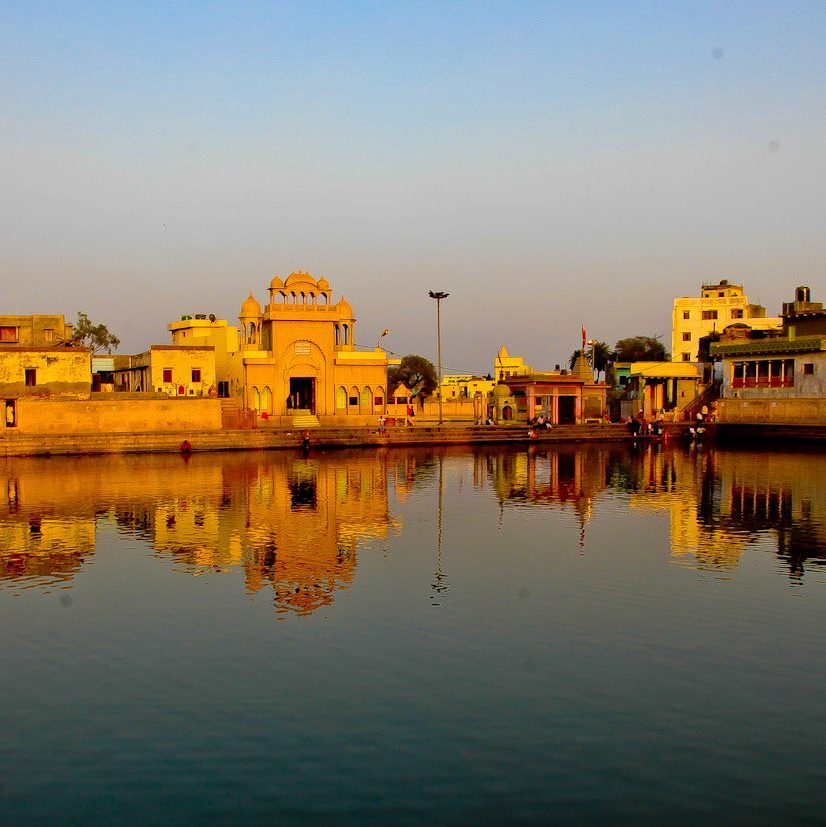
Inside the shrine, one can see, carved in bass-relief, the Deity of Bahula Devi in the form of a cow standing with her calf, and standing next to Bahula Devi is Lord Krishna along with Yamaraja, in the form of a tiger.
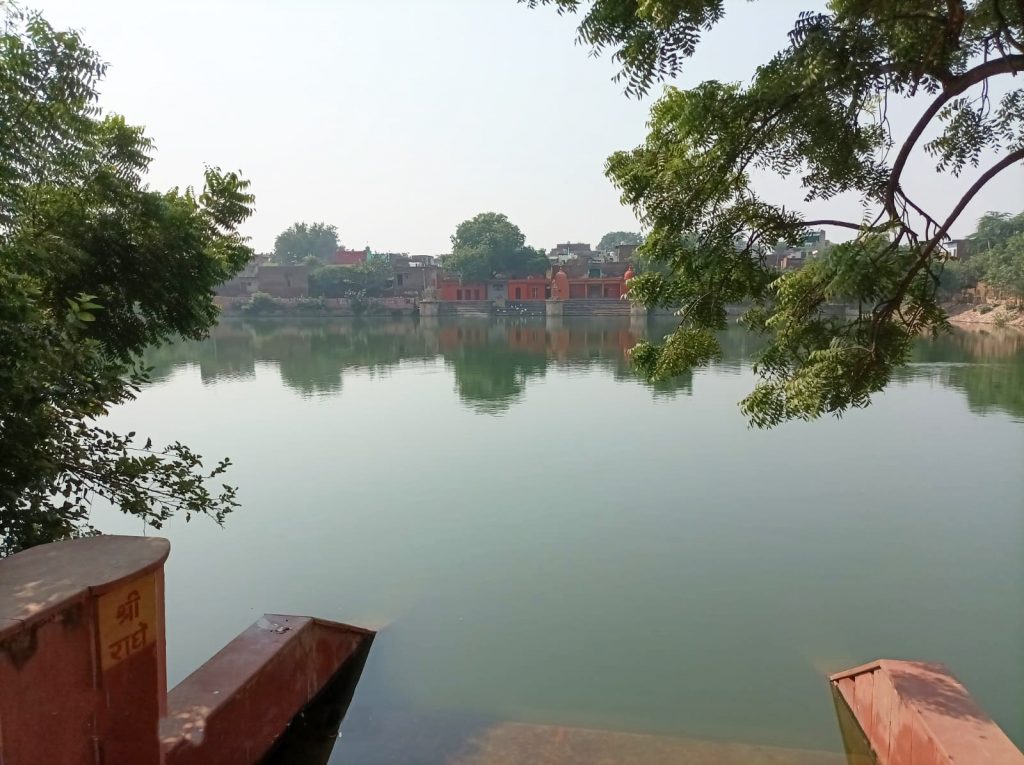


Shrila Rupa Goswami in the Mathura-mahatmya, while quoting a verse from the Padma-purana (420) has stated, “Near the delightful Mount Govardhana is Shri Hari’s beloved Radha-kundaa. One who bathes in Radha-kund on the day of Bahulastami (Kartika-krishna-paksa) will become very dear to Sri Hari.” It appears that because Bahulashtami is the only bathing day specifically mentioned in any of the Six Goswami’s literatures, it was taken to be the actual appearance day of Radha-kunda. Bahulashtami means the eighth day of the waning moon and the word ‘bahula’ means ‘dark fortnight’ of the waning moon, also known as krishna-paksha. The word ‘ashtami’ means the ‘eighth day’ of the lunar month. Because the Vrajavasis believe that Radha-kunda appeared on the stroke of midnight on Bahulashtami day, many thousands of pilgrims descend on Radha-kunda to take their sacred bath on the exact stroke of midnight.


The story of Bahula Devi is recounted in a number of Puranas and in some versions, the details of the story vary, however, the essence of the story is the same. In the Padma Purana, it says that in her previous life, before attaining the position as the consort of Lord Shri Hari, Bahula had taken birth as a cow in the forest of Bahulavana, and her character was severely tested by the Lord Himself. One day, Bahula was taken to the pasturing ground by her master, a local brahmana, so that she could feed on the fresh grass growing in the Bahulavana forest. Suddenly a very hungry tiger appeared from the jungle and was preparing to attack and eat Bahula. Seeing that the end was near, Bahula requested the tiger to wait just a moment so that she could feed milk to her hungry calf waiting nearby. Bahula promised to return as soon as the calf was fed. The tiger agreed to the proposal and waited for Bahula to return. Within a short time, after feeding her baby calf, Bahula returned as promised. To her amazement, she found that the tiger had disappeared and Lord Krishna was standing there along with Yamaraja, who had appeared as the tiger just to test her truthfulness. Being pleased with Bahula’s honesty, even in the face of death, Lord Krishna gave her the benediction that in her next life she would attain the position as one of the goddesses of fortune and achieve the Supreme Lord as her husband.


